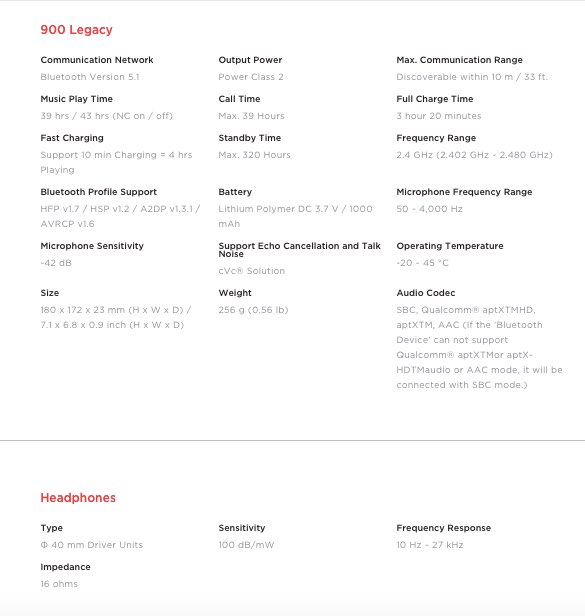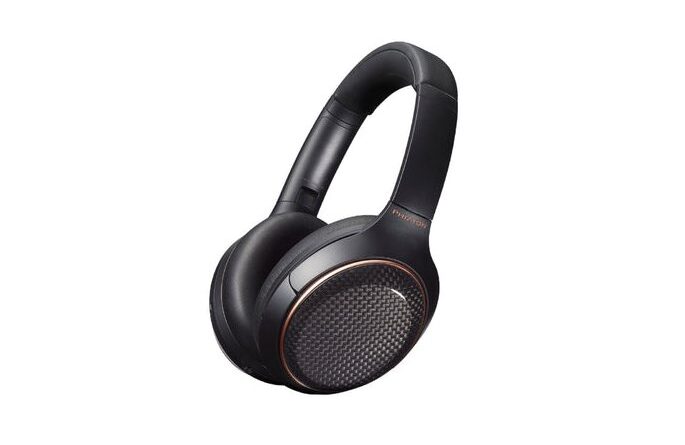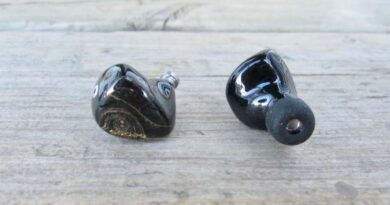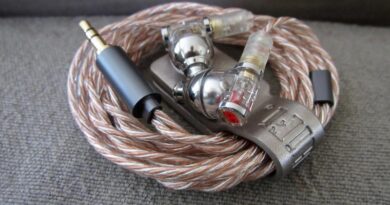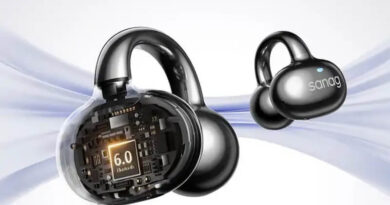Phiaton 900 Legacy Wireless Headphones Review – Carbon Fiber For Your Diet
Under-the-radar $199 (orig. $249) BT phones from Korea-based Phiaton, who hasn’t gotten much attention lately but has been trotting out well-reviewed audio gear for years.
The 900 Legacy distinguishes itself from its drab plastic peers by using carbon fiber on the side panels—it’s a premium flourish, if a bit flashy. Build seems more substantial than Beats Studio/Bose QC/Bose 700 and touch controls are reasonably responsive.
The head-hugging form factor isn’t great for glasses and can get a bit uncomfortable for longer sessions, but does provide for good stability and seal—these are gym-worthy. Battery life of 43+ hours is really impressive and substantially better than Sony, Bose and Apple. There’s no EQ or app, but most of the desired tech features—multipoint, proximity detection, aptX HD—are present.
ANC isn’t as effective in the 900 Legacy as the Bose or Sony XM4 (some high frequencies intrude), but pretty effective nonetheless. However, the ANC tends to add boominess to the low end and to hollow out the mids, and I did most of my music listening with ANC off.
The 900 Legacy immediately grabs you with an energetic, brightish signature which really brings on the bass—the low end is deep, voluminous and verges on overpowering the higher frequencies—it can sound overamped or boomy on certain jazz and acoustic fare, but generally retains credible speed and note definition (note that playing these in passive wired mode noticeably attenuates the bass, but otherwise makes these sound laid-back and less involving).
Mids are nicely forward; treble is crisp, well extended and detailed; despite the prominent low end, percussion has a lot of snap. Resolution is very, very good by Bluetooth standards (little nuances like vibrato on reeds is well-captured) and tonality, if not as organic as good wired sets, sounds less processed and artificial than most of its BT peers.
Although instruments are cleanly separated, soundstage is unexpectedly narrow and low-ceilinged—on big-sounding recordings like the Stones’ “Rocks Off” or Humble Pie’s “30 Days”, it sounds like the musicians are crammed onto a small stage, and the precise location of the performers can be somewhat imprecise. However, the MS900 have an inalienable, toe-tapping jump factor—your ears perk up when you throw on an uptempo genre. They are an exciting listen.
The 900 Legacy are a small but discernable sonic step-up from the very capable, value-leading ($99) 1More Sonoflow, which have an unforced, natural-sounding timbre, but sound a bit flatter, without the energy and dynamic slam of the 900 Legacy. The Phiaton sound better in all respects than the Beats Studio 3, which share the 900’s thick low end but trail considerably in high end clarity and sound a little muddy.
Compared to the Sony WH1000-XM4, the 900 Legacy have a leaner, more sculpted note texture and are considerably less expansive, though bassier and with more high-level detail; the Sony are warmer and more coherent overall but have a more synthetic tonality. The Sony also avoid the low end bloom of the Phiaton and image better. The Phiaton actually approximate the crisp (and bass-forward) presentation of Apple’s ($450) AirPods Max; the Apple has better bass control, more space between the instruments and a wider stage while the 900 Legacy may be more revealing at the high end.
For all their virtues, the 900 Legacy fall short of endgame for me—these are phones that scream for EQ to tame the sometimes-unruly bass. Given that since the release of Sony’s XM5 you can find the XM4 for around the same price as the MS900, if I had to choose just one headphone I might still opt for the better-balanced XM4, which are also slightly more comfortable and have better UI.
That said, the 900 Legacy are the best over-ear BT I’ve heard at digging out microdetail and certainly aren’t lacking for immediacy and slam, and the thought of owning only one headphone is anathema to true believers. Definitely worth a listen.
Specifications Phiaton 900 Legacy
